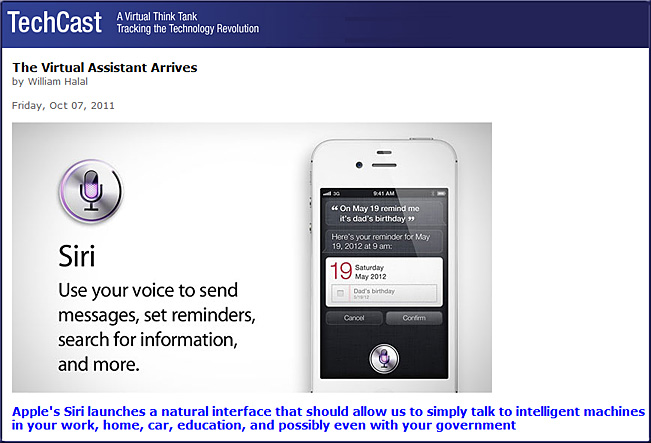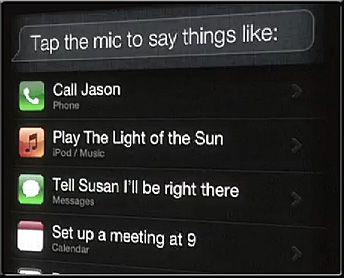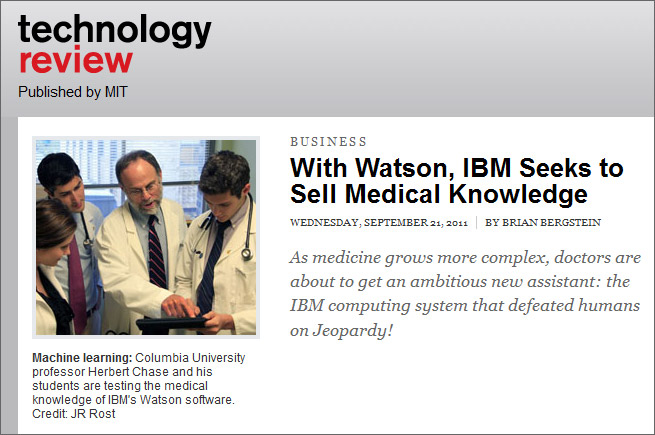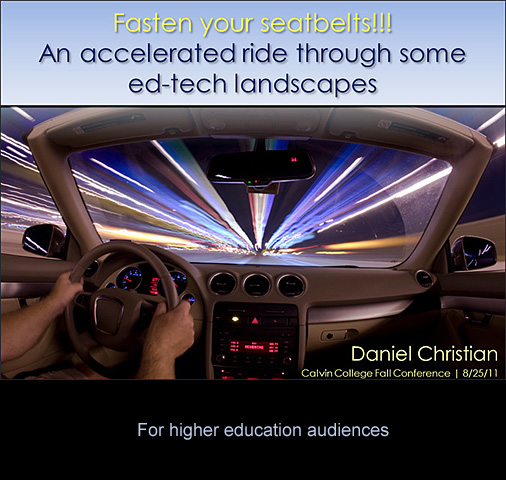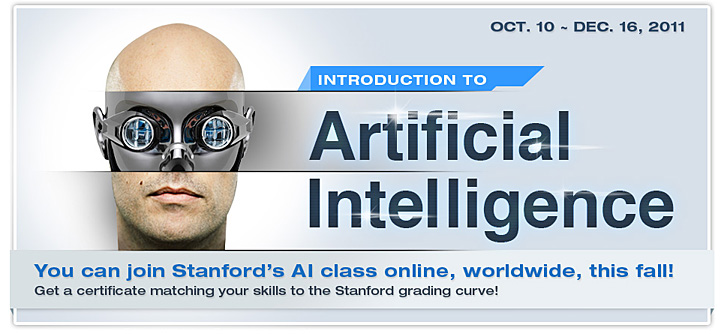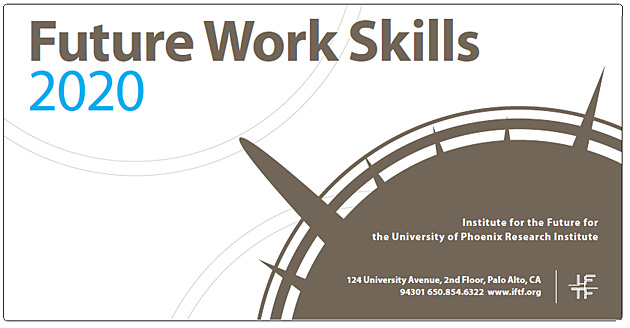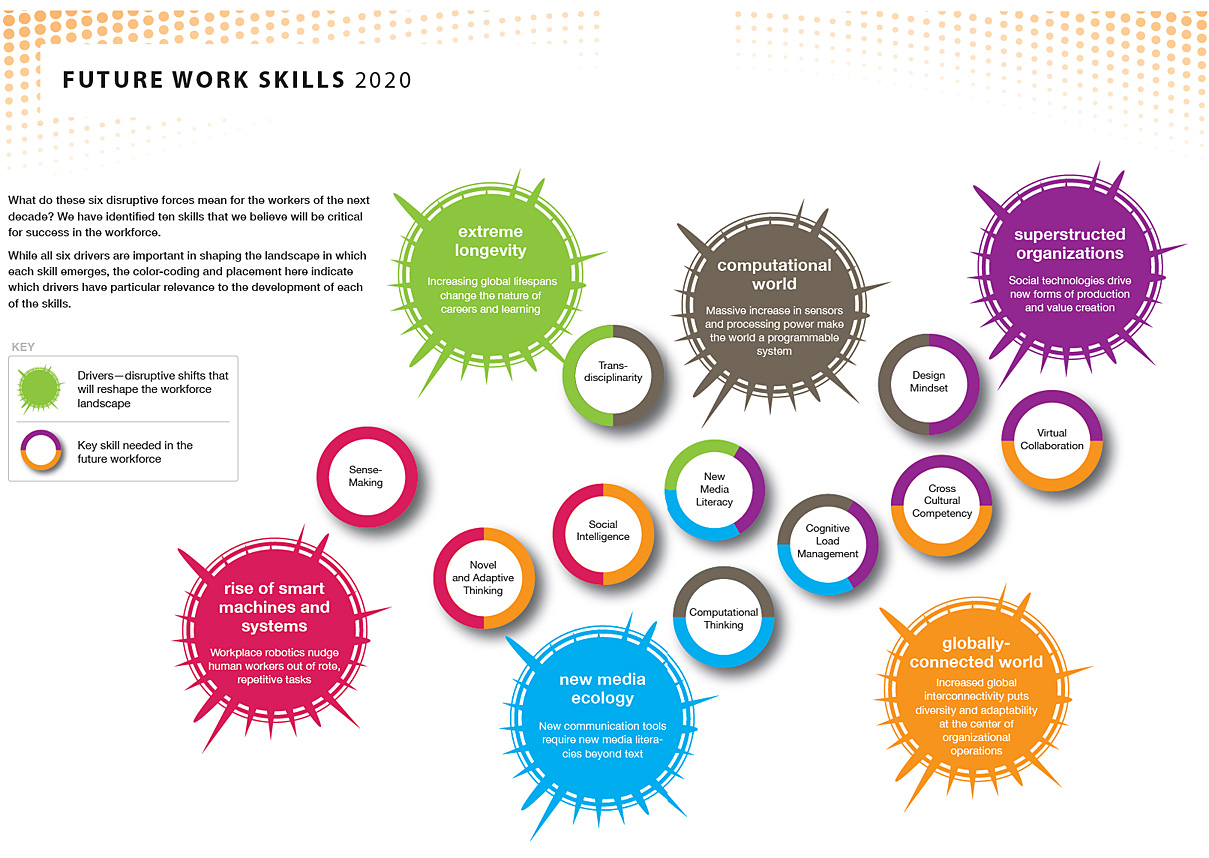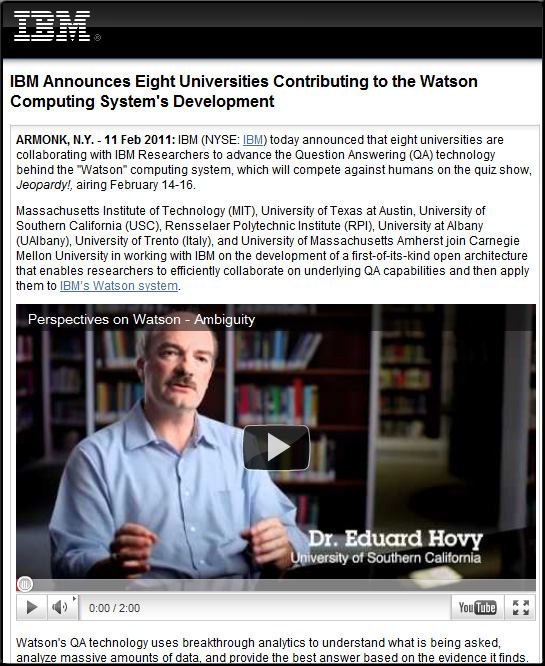Some items on this:
- IBM aims to build artificial human brain within 10 years — from techland.time.com
WATSON, it seems, was only the beginning. Not content with building a computer that can win Jeopardy without breaking an electronic sweat, IBM has announced plans to create a “cognitive computer” that will simulate the same number of neurons as the human brain, yet run on less energy than the supercomputer that made Ken Jennings […]
- IBM projects it will have world’s most powerful supercomputer in two years, artificial human brain in 10 — from idealab.talkingpointsmemo.com
From DSC: Expectations, today, are getting hard to beat
Since Apple’s event yesterday, I’ve heard some conversations on the radio and reviewed several blog postings and articles about Apple’s announcements…many with a sense of let down (and some with the usual critical viewpoints by the backseat drivers out there who have never tried to invent anything, but who sure like to find fault with everyone else’s inventions and innovations).
It made me reflect on how high our expectations are becoming these days! It wasn’t enough that iCloud is coming on 10/12 (and who knows the directions that will take society in). It wasn’t enough to introduce some serious software-based innovations such as Siri (which bring some significant advancements in the world of artificial intelligence) or AirPlay for the iPhone. It wasn’t enough to enter into the multi-billion dollar card industry with their new Cards app for the iPhone. Wow…tough crowd.
What might these announcements — and expectations — mean for education?
Well…I can see intelligent tutoring, intelligent agents, machine-to-machine communications, the continued growth of mobile learning, learning from the living room, the initiation of programs/events caused by changes in one’s location, continued convergence of the television/computer/telephone, continued use of videoconferencing on handheld devices, cloud-based textbooks/apps, and more.
Some items from Apple today:
- iCloud goes live on October 12

- iPhone 4S launches October 14, $199, $299, $399, AT&T, Verizon, Sprint, US & International
- New iPod Nano Is Clock and Fitness Watch in One
- Apple iPhone 4S: The 4 most important features
- Apple Unveils Siri, the iPhone 4S Voice Assistant
Apple has unveiled Siri, a new iPhone 4S feature that lets you complete tasks on your phone by talking to it. During an on-stage demo at Apple’s headquarters in Cupertino, CA, Apple VP Scott Forstall demonstrated Siri’s ability to process natural language and respond accordingly. When he asked the iPhone 4S, “What’s the weather like today?”, it responded with the weather forecast. It is capable of parsing natural human language, rather than simple commands. - AirPlay Mirroring coming to iPhone 4S, not just for iPads
- New iPod touch: cheaper, iOS 5, and now in white
- Apple Unveils iPhone 4S: Faster CPU, Better Camera and Voice Controls
Originally saw this at Steve Knode’s newsletter, which stated:
With Watson, IBM Seeks to Sell Medical Knowledge – Watson is the supercomputing engine that beat the top two human competitors on the quiz show Jeopardy! this year, and Daniels is on the IBM team developing the software’s first commercial application as what could be a stunningly useful diagnostic assistant for doctors. If it works as envisioned, Watson could help doctors identify what is afflicting any patient and suggest a course of treatment.
Robot financial workers to replace human traders, report says — from innovationnewsdaily.com by Jeremy Hsu
Excerpt:
Human financial traders complicit in precipitating the Great Recession may soon find themselves as unemployable as many others, put out of work by robots as if they were factory workers or stevedores.
…
Of course, like the human world of high finance, the new world of robot financial trading comes with some risks. Better self-regulation is needed to prevent short-sighted, computer-driven market swings such as the “Flash Crash” of May 6, 2010, that wiped out $800 billion on the U.S. equity market in five minutes, and then recovered most of the loss within 30 minutes. Disturbingly, the report found very few studies that examine how human and robot traders interact with one another.
The evolution of next-generation trading algorithms that can learn and adapt without human involvement may also make their behavior “very difficult to predict or control,” the report says. That unpredictability would extend to world financial markets dominated by such robot traders.
Still, there is one likely upside for any college graduates and job seekers of today and tomorrow — computer programmers who can develop such algorithms will certainly remain in high demand.
Addendum on 9-13-11:
- IBM’s Watson to offer medical advice to doctors — from news.cnet.com
IBM unveils cognitive computing chips — from IBM.com
Excerpt:
ARMONK, N.Y., – 18 Aug 2011: Today, IBM researchers unveiled a new generation of experimental computer chips designed to emulate the brain’s abilities for perception, action and cognition. The technology could yield many orders of magnitude less power consumption and space than used in today’s computers.
In a sharp departure from traditional concepts in designing and building computers, IBM’s first neurosynaptic computing chips recreate the phenomena between spiking neurons and synapses in biological systems, such as the brain, through advanced algorithms and silicon circuitry. Its first two prototype chips have already been fabricated and are currently undergoing testing.
Called cognitive computers, systems built with these chips won’t be programmed the same way traditional computers are today. Rather, cognitive computers are expected to learn through experiences, find correlations, create hypotheses, and remember – and learn from – the outcomes, mimicking the brains structural and synaptic plasticity.
Addendum on 8/16/11:
- Virtual and artificial, but 58,000 want course — from NYT
PALO ALTO, Calif. — A free online course at Stanford University on artificial intelligence, to be taught this fall by two leading experts from Silicon Valley, has attracted more than 58,000 students around the globe — a class nearly four times the size of Stanford’s entire student body.
From DSC:
Items re: The Singularity:
- The Singularity just got a lot closer — from Benzinga.com
New tool by ai-one inc. allows programmers to build artificial intelligence into almost any software application.
“…ai-one’s “biologically inspired intelligence” is a virtual brain that learns without human intervention.” - Kurzweil Accelerating Intelligence — www.kurzweilai.net/
… accelerating change articulated in Ray Kurzweil’s landmark books — notably The Age of Spiritual Machines and The Singularity is Near — and updates these … - http://www.singularity.com/
- http://en.wikipedia.org/wiki/Technological_singularity
- Michael Vassar and Michael Anissimov Talk About the Singularity on Supreme Master TV (12/27/10)
- Excerpt from The Illusion of Control in a Intelligence Amplification Singularity (7/1/11)
From what I understand, we’re currently at a point in history where the importance of getting the Singularity right pretty much outweighs all other concerns, particularly because a negative Singularity is one of the existential threats which could wipe out all of humanity rather than “just” billions. The Singularity is the most extreme power discontinuity in history. A probable “winner takes all” effect means that after a hard takeoff (quick bootstrapping to superintelligence), humanity could be at the mercy of an unpleasant dictator or human-indifferent optimization process for eternity. - IBM’s Watson | IBM’s Deep QA Project| Human vs. Machine
From DSC:
I don’t mean to suggest here that just because someone is pursuing the development of AI, robotics, etc. that their heart isn’t right — that’s just not accurate and such a perspective would be painting a broad and bogus swath across mankind.
But from some of the robotic and AI-related sites and blogs that I’ve seen (and not necessarily those listed above), I’m becoming a bit more skeptical of peoples’ motivations in this space, as many of these folks seem to be saying they can create better than God can. Alternatively, some don’t believe in a Creator at all, and thus want to make themselves the ultimate creator. When inventors, entrepreneurs, corporate leaders, military leaders, and other relevant parties have “hearts of flesh” that are compassionate, caring, and giving…these technologies can be very useful and beneficial. But I’m more concerned if these types of technologies are warped into a pathway for power, personal gain, military applications, etc.

Also see:
- Last Look: War of the machines? — from cnn.com
- The DIY Terminator: Private Robot Armies And The Algorithm-Run Future Of War — from FastCompany.com by Greg Lindsay
In the latest installment of the Butterfly Effect: Predator drones are just the start of unmanned, autonomous warfare technology. But as the tech becomes more democratized and more deadly, what happens when anyone can assemble an army of killing machines?









